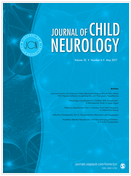 Spinal muscular atrophy is one of the most common neuromuscular diseases in children. Due to degeneration of the second motor neuron, it leads to paralysis and premature death in the most severe cases. Among the many sub-categories of SMA depending on the age of the first symptoms and the maximum motor levels reached by the patient, type 0 (also referred to as 1A) is a relative exception. The symptoms are indeed very early there, with hypotonia and retractions present most often from birth, and a very rapidly unfavorable development.
Spinal muscular atrophy is one of the most common neuromuscular diseases in children. Due to degeneration of the second motor neuron, it leads to paralysis and premature death in the most severe cases. Among the many sub-categories of SMA depending on the age of the first symptoms and the maximum motor levels reached by the patient, type 0 (also referred to as 1A) is a relative exception. The symptoms are indeed very early there, with hypotonia and retractions present most often from birth, and a very rapidly unfavorable development.
In an article published in June 2020, an American team reports the case of a child diagnosed with SMA type 0 and treated on D14 by iterative intrathecal injections of nusinersen (an antisense oligonucleotide) supplemented, on D114, by gene therapy (single injection of ‘onasemnogene abeparvovec). Despite the undeniable motor improvements noted on the CHOP-INTEND chart, this child was gastrostomized and tracheotomized. She also presented cutaneous and cardiovascular complications already reported in this form of SMA. Amputations of several fingers were necessary due to necrosis of the extremities. This observation raises several questions, the first of which is ethical. It also illustrates the limits of the effectiveness of innovative therapies and confirms the multisystem involvement of this particular form of SMA.
